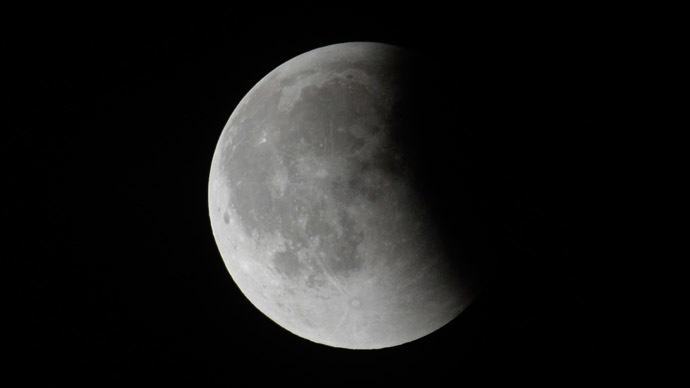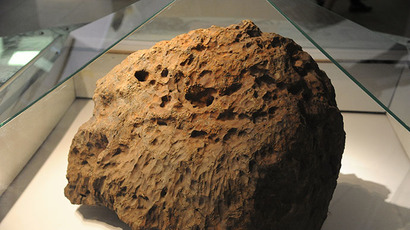Moon formed after Earth collided with another world, study says

For the first time, scientists have discovered evidence backing up the theory that the moon was created when a separate planet crashed into the Earth.
Published in the journal Science, the study states that researchers found the evidence by analyzing lunar rocks brought back to Earth during the Apollo mission more than 40 years ago. Scientists said they identified small chemical differences between some moon rocks and the rocks found on the Earth, suggesting that another world must have contributed to the lunar body’s creation.
Speaking with BBC News, lead author of the study Dr. Daniel Herwartz of the University of Goettingen seemed almost relieved that his team was able to make the breakthrough.
"It was getting to the stage where some people were suggesting that the collision had not taken place," he said. "But we have now discovered small differences between the Earth and the Moon. This confirms the giant impact hypothesis.”
Herwartz also told Reuters that although “the differences are small and difficult to detect … they are there.”
Currently, the prevailing theory is that approximately 4.5 billion years ago, a planet called “Theia” collided with the Earth, with the resulting debris combining to form the moon. Until this new study was published, however, scientists had found no evidence of Theia in the moon’s composition. Now, the study’s researchers believe the moon’s composition is roughly a 50/50 split between Earth and Theia.
Despite the news, some scientists remain skeptical. As noted by Reuters, it is generally believed that each body in space is home to a different chemical makeup or “fingerprint.” If that remains true today, then why are the differences between rocks on the moon and Earth so small?
"What you are looking for is a much bigger difference, because that is what the rest of the Solar System looks like based on meteorite measurements," Professor Alex Halliday of Oxford University told BBC.
"It raises the question of how well the meteorites from Mars and the asteroid belt in the outer Solar System are representative of the inner Solar System? We do not have samples from Mercury or Venus,” he added. “They may well be similar to the Earth. If that is the case then all the arguments over the similarities of the Earth and the Moon fall away.”
If scientists do conclude that the differences are significant enough to justify the theory that Theia crashed into the Earth to form the moon, then it’s possible they will also have to rethink the idea that other planets and meteorites have very different fingerprints of their own.
Other scientists, such as Professor Rob de Meijer of Netherlands’ Groningen University, said the new research did nothing to alter his belief – that a buildup of nuclear fuel within the Earth caused an explosion in its crust and mantle, and that the moon was formed from this material. He said the only way to really discover the moon’s composition would be to return and explore rocks hidden further underground.
"The difference is too small," he said to BBC. "We don't know how the Moon was formed. What we need are manned missions to the Moon and a search for rocks deeper under the lunar surface, that have not been polluted by meteorite impacts and the solar wind."













